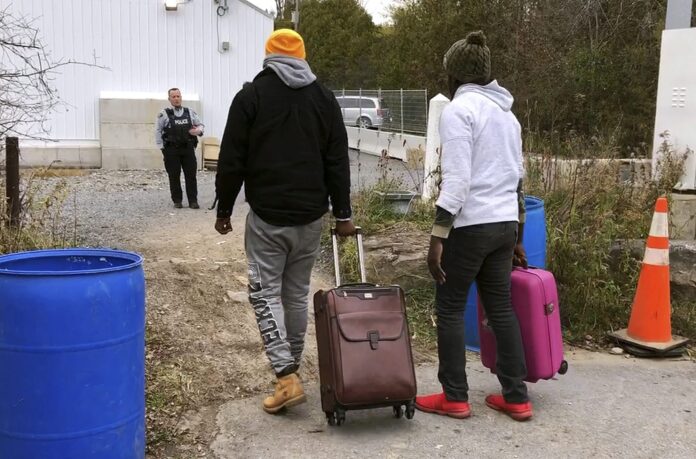Snowy northern winters tend to see a drop in asylum-seekers crossing from the United States into Canada at Roxham Road, Quebec. Not this past winter.
In December the number of asylum-seekers entering Canada outside formal land border crossings reached its highest point since August 2017, government statistics show.
The growing caseload is lengthening wait times for eligibility hearings, leaving claimants waiting months on social assistance before getting work permits, one attorney said.
The increase follows the lifting of a pandemic-era order in December. Since March 2020, border police had refused entry to all asylum-seekers in order to curb the spread of COVID-19.
“It seems to me the ministry has been caught off guard,” said Montreal lawyer Pierre-Luc Bouchard, who has 70 refugee cases after two years with almost zero new clients. “They are completely confused.”
A spokesperson for Immigration, Refugees and Citizenship Canada told Reuters last week that the increase was expected and said it is working to speed up applications and shorten eligibility hearing wait times.
In December, Royal Canadian Mounted Police intercepted 2,811 asylum-seekers crossing the border outside formal land ports of entry, the vast majority crossing into Quebec. In January and February they intercepted 2,382 and 2,164, respectively, compared to 888 and 808 in January and February of 2019.
These asylum-seekers can enter Canada because they do not enter at formal border crossings. Under the Safe Third Country Agreement, set to be contested at Canada’s Supreme Court, Canada and the United States can turn back asylum-seekers in either direction at formal land border crossings.
Trending Stories
Speculation by Canadians ‘absolutely’ playing a role in red-hot home prices: expert
Widespread systemic racism in Canadian military ‘repulsing’ new recruits: report
Canada starts Aeroplan fund to help fly in Ukrainians fleeing Russia’s war
Volunteers who come to the border bearing water bottles or mittens and who try to ensure border-crossers’ rights are respected have resumed their weekly trips to Roxham Road after suspending them during the pandemic, said Frances Ravensbergen, a coordinator for migrant advocacy group Bridges Not Borders.
Some asylum-seekers “have kind of waited for the borders to reopen,” Bouchard said.
Roxham Road is not a formal border crossing, although so many asylum-seekers use it that police officers are often stationed there to intercept migrants.
Some would-be refugees were waiting in the United States, others in Latin America or in Kenya until they felt they could make the trip to Canada via the United States, Bouchard said. Canadian refugee claimants come from a range of countries, including Mexico, Colombia, India and Iran.
Many keep abreast of Canada’s shifting regulations, “sometimes with some confusion,” Bouchard said.
But Bouchard thinks there is more than just Canada’s lifted border closure at play. “People are desperate,” he said.
He said the increase was also an indication that “under (President) Joe Biden the (U.S.) immigration policies have not really, really changed,” especially regarding gender-based refugee claims, which are seen as less likely to succeed in the United States.
U.S. apprehensions of migrants crossing from Mexico reached a 20-year high last year, and the Biden administration has been reluctant to roll back all the measures imposed by his predecessor Donald Trump.
The U.S. government did not immediately respond to a request for comment.
© 2022 Reuters



